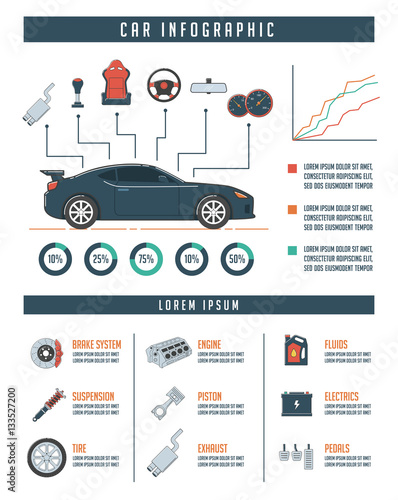Decoding Your Automobile'S Warning Indicators: What They Absolutely Indicate
Decoding Your Automobile'S Warning Indicators: What They Absolutely Indicate
Blog Article
Web Content Author-Vinson Torres
When you're behind the wheel, those radiant caution lights on your control panel can be a bit complicated. Do you recognize what they're trying to tell you about your car's health and wellness? Understanding https://www.nbcnews.com/news/us-news/auto-shop-finds-teeth-hair-fatal-pedestrian-crash-new-jersey-car-rcna15379 of these lights is essential for your safety and security and the long life of your lorry. So, the next time among those lights pops up, would not you want to understand its message properly and take the essential steps to address it?
Common Warning Lighting and Interpretations
Determine common warning lights in your auto and understand their definitions to guarantee risk-free driving.
The most regular warning lights consist of the check engine light, which signals issues with the engine or discharges system. If https://devinfdysm.activoblog.com/33937392/the-comfort-of-mobile-car-outlining-changes-your-lorry-s-appearance-yet-is-it-as-effective-as-traditional-approaches-discover-the-fact-behind-this-solution comes on, it's crucial to have your vehicle checked immediately.
The oil stress warning light indicates reduced oil pressure, requiring prompt focus to prevent engine damages.
A blinking battery light might suggest a defective billing system, potentially leaving you stranded if not dealt with.
The tire stress monitoring system (TPMS) light signals you to low tire pressure, affecting vehicle security and fuel performance. Neglecting this could result in dangerous driving conditions.
The ABS light suggests an issue with the anti-lock stopping system, compromising your capability to stop promptly in emergencies.
Finally, the coolant temperature level cautioning light warns of engine getting too hot, which can cause serious damage otherwise fixed promptly.
Comprehending these typical caution lights will certainly help you address issues promptly and maintain secure driving conditions.
Value of Prompt Focus
Comprehending the usual caution lights in your car is just the primary step; the significance of quickly addressing these warnings can not be stressed sufficient to guarantee your safety on the road.
When a warning light illuminates on your control panel, it's your vehicle's way of connecting a prospective concern that needs interest. Disregarding these cautions can lead to more serious problems in the future, compromising your safety and security and potentially costing you much more out of commission.
Motivate focus to alerting lights can stop malfunctions and accidents. As an example, a flashing check engine light can indicate a misfire that, if left unattended, can trigger damage to the catalytic converter. Addressing this promptly can save you from a pricey repair service.
Similarly, a brake system alerting light could signify reduced brake fluid or used brake pads, crucial components for your security when driving.
Do It Yourself Troubleshooting Tips
If you see a caution light on your control panel, there are a few do it yourself repairing pointers you can attempt before seeking professional help.
The very first step is to consult your automobile's manual to recognize what the specific caution light indicates. Occasionally the issue can be as straightforward as a loose gas cap causing the check engine light. Tightening up the gas cap might settle the issue.
Another common issue is a low battery, which can cause various cautioning lights. Checking the battery connections for corrosion and ensuring they're secure may deal with the problem.
If a caution light continues, you can attempt resetting it by disconnecting the vehicle's battery for a couple of minutes and after that reconnecting it. Additionally, inspecting your automobile's liquid levels, such as oil, coolant, and brake liquid, can assist fix advising lights associated with these systems.
Verdict
Finally, comprehending your vehicle's warning lights is necessary for maintaining your car running smoothly and safely. By promptly dealing with these signals and understanding what they indicate, you can stay clear of pricey fixings and potential malfunctions.
Bear in mind to consult your car's guidebook for particular information on each alerting light and take action as necessary to guarantee a trouble-free driving experience.
Remain notified, remain secure when driving!
